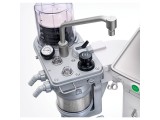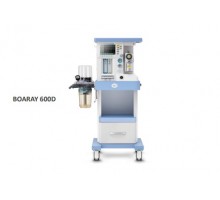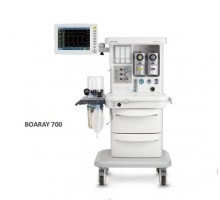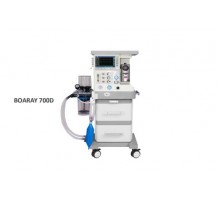Narcotics-respiratory devices

Anesthesia-breathing devices are designed for dosed delivery of anesthetic and anesthetic mixtures into the patient's airways. The medical device is used to provide inhalation anesthesia and assisted breathing during surgeries, procedures and invasive diagnostic tests. In modern models, several modes of forced ventilation are provided:
- By volume (VCV) and pressurized (PCV).
- Synchronized intermittent delivery.
- Switching to standby mode in case of respiratory arrest for patients with independent respiratory function.
The anesthesia and respiratory machine is equipped with a display that shows information about the patient's condition (airway distensibility, spirometry data, air pressure range, respiratory volume, pressure and flow graphs). The presence of the display allows you to monitor the parameters of the device and vital signs of the patient.
Anesthesia and respiratory machine: design features
Anesthesia-breathing apparatus supplies a gas mixture in which the necessary proportions of components are observed, the preset temperature and humidity are maintained. The device provides elimination of exhaled air in conditions of minimal effort on the part of the patient. The equipment includes dosimeters, built-in ventilator system, gas source, humidifier and liquid vaporizer, breathing circuit. Pressurized gas (oxygen, nitrogen) is contained in a cylinder. Due to the use of compressed gases at a small volume, cylinders are characterized by a large capacity.
Reducing the gas pressure on exhalation is achieved through the use of reducers. Dosimeters measure a certain volume of the gas mixtures supplied. The function of the breathing circuit is to supply the breathing mixture from the mixing chamber to the patient's lungs.
Anesthesia and respiratory devices: types
Depending on the size and place of installation distinguish stationary, wall-mounted and mobile devices. Stationary models are installed in operating units, intensive care units and diagnostic rooms. Wall-mounted devices for anesthesia are designed to complete emergency vehicles. Mobile devices are used to provide emergency medical care during trips to patients.
Distinguish reversible models, which provide for exhalation into the breathing tube of the device. When using a non-reversible anesthesia device, the exhaled air enters the atmosphere. Closed-type models assume full reversion and the presence of an adsorber. In semi-closed devices there are valves through which excess gas is withdrawn.
Anesthesia and respiratory devices: selection criteria
Modern anesthesia machines control the frequency of respiratory movements, the volume of the supplied mixture during inhalation and exhalation. What options to pay attention to when choosing:
- Accuracy of dosing of the air mixture.
- The amount of information displayed on the screen.
- The number and types of operating modes.
- The presence of a built-in battery for autonomous operation.
- Protection against gas leaks.
- Automatic verification of the correct installation of the vaporizer.
When choosing a model for pediatric departments, it is important to consider the minimum respiratory volume, which should not exceed 20 liters. Universal models are compatible with reversible and non-reversible breathing circuits. The price of anesthesia-breathing apparatus depends on the characteristics, functionality, manufacturer.
Reasons to buy in the company Rad Farm
Rad Farm Company specializes in equipping medical institutions in Ukraine with equipment, furniture, reagents. We can inexpensively buy anesthesia-breathing machines and other equipment. Pros for buyers:
- Assistance in selection.
- Delivery in the regions of Ukraine.
- Reasonable prices.
- Service.
In the catalog certified products of reliable brands. Choose convenient payment options. All products are covered by the manufacturer's warranty.
Modern operating rooms in private and public clinics of different medical fields are necessarily equipped with anesthesia and resp..
Anesthesia and respiratory equipment is an essential piece of equipment in the operating rooms of community and commercial clinics..
The BOARAY 700D anesthesia and respiratory machine is designed to perform general anesthesia before surgical intervention. The equ..




